The best pulse oximeters for heart tracking include the Apple Watch Series 10 and Polar Vantage V3 for premium features, while Fitbit Sense 2 offers excellent value with SpO2 and ECG monitoring. For specialized tracking, consider the Oura Ring 4 or Amazfit Helio Ring. Look for devices with FDA approval, comfortable fit, and ±3% accuracy ratings. The right wearable depends on your specific needs – athletes, sleep trackers, and heart patients all benefit from different features.
Understanding Pulse Oximetry in Wearable Technology
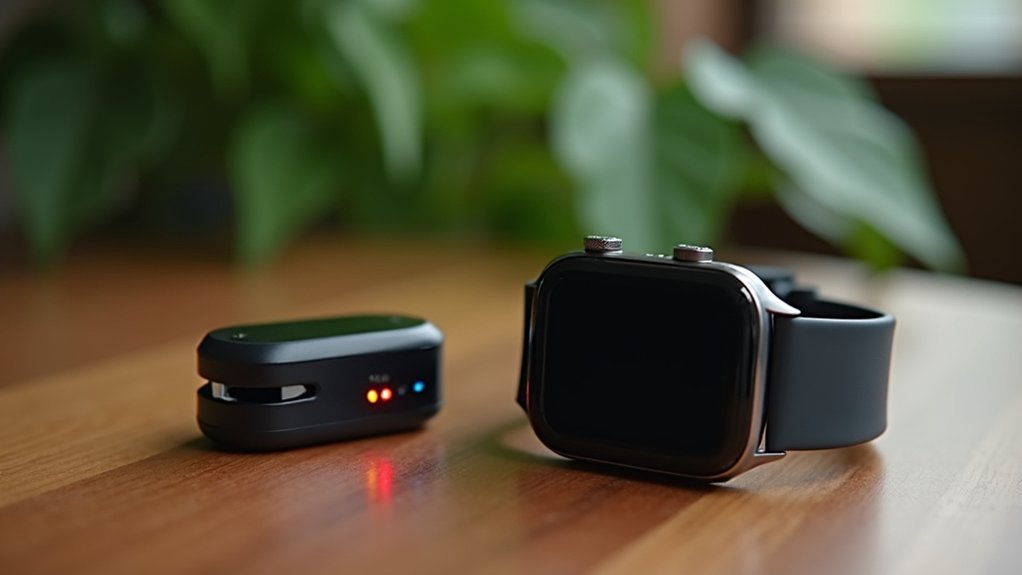
Light waves reveal what the naked eye can’t see. When you wear a pulse oximeter, it uses specific wavelengths of light to measure how much oxygen is in your blood by analyzing the light absorption patterns of oxygenated versus deoxygenated hemoglobin.
Today’s wearable pulse oximeters have transformed this clinical technology into portable devices you can wear throughout your day. These devices don’t just track oxygen levels—they integrate with other health metrics like heart rate and activity patterns for thorough health monitoring. Most devices place a small probe on your finger to obtain accurate readings in a painless, non-invasive way.
Advanced multiwaveform sensors can differentiate between types of hemoglobin while improved signal processing enhances accuracy in real-time.
The true power of wearable pulse oximetry lies in its remote monitoring capabilities, allowing healthcare providers to track your essential signs from anywhere, making continuous health assessment more accessible than ever before.
Key Features to Consider When Choosing a Heart Monitoring Device
When selecting a heart monitoring device, you’ll need to balance several critical features that impact both performance and usability.
Look for devices with secure, comfortable fits that guarantee accurate readings while remaining wearable throughout the day.
A snug, comfortable fit ensures both accuracy and all-day wearability in your heart monitor selection.
Prioritize models with larger, readable screens and long-lasting rechargeable batteries. Continuous monitoring capabilities and data storage features allow you to track patterns over time, while alert systems notify you of concerning measurements.
FDA-approved devices with clinical validation offer greater reliability.
Consider your lifestyle needs—compact designs provide discretion, while connectivity options enable integration with health apps. Many advanced options like the Wellue Viatom O2Ring provide seamless app integration for real-time data access and personalized alerts.
Don’t overlook customer support availability and warranty coverage.
Finally, check user reviews for real-world reliability assessments before making your investment in a device that will monitor your essential heart metrics.
Premium Smartwatches With Advanced Oxygen Saturation Tracking
Premium smartwatches have redefined health monitoring by integrating sophisticated oxygen saturation tracking within luxurious designs. The VERTU GRAND WATCH-Bespoke Gold exemplifies this blend with its 18K gold construction, diamond accents, and real-time blood oxygen monitoring capabilities. Similar to the Apple Watch Series 10, these devices can provide sleep apnea notifications for better health management.
| Device Feature | Health Benefit | Design Element |
|---|---|---|
| Blood Oxygen Monitoring | Provides essential health insights | 44mm luxury face |
| Heart Rate Variability | Tracks stress and heart health | Sapphire glass durability |
| Sleep Apnea Detection | Identifies breathing disturbances | Fortune Flame Pattern |
You’ll appreciate the extended battery life in these devices, with some models lasting up to 30 days. Advanced models incorporate AI-driven features for precise activity tracking, while maintaining comfort through ergonomic designs that you can wear throughout your health monitoring journey.
Budget-Friendly Wearables With Reliable SpO2 Monitoring
Several affordable pulse oximeter wearables now offer reliable SpO2 monitoring without the premium price tag.
You’ll find options from brands like Fitbit, Xiaomi, and Amazfit that combine essential health tracking features with reasonable prices.
When choosing a budget-friendly SpO2 wearable, consider:
- Battery life – The Xiaomi Smart Band 9 excels here with extended usage between charges.
- Accuracy – Garmin Vivosmart 5 provides more precise readings despite its higher price point.
- Display size – The Redmi Watch 5 offers a larger screen for easier reading of your health metrics.
While these devices may lack advanced features of premium smartwatches, they deliver reliable oxygen saturation monitoring alongside basic fitness tracking—perfect if you’re health-conscious but budget-minded. Most affordable pulse oximeters struggle with accuracy on darker skin tones, similar to issues found in higher-end models.
Specialized Pulse Oximeter Rings and Wristbands
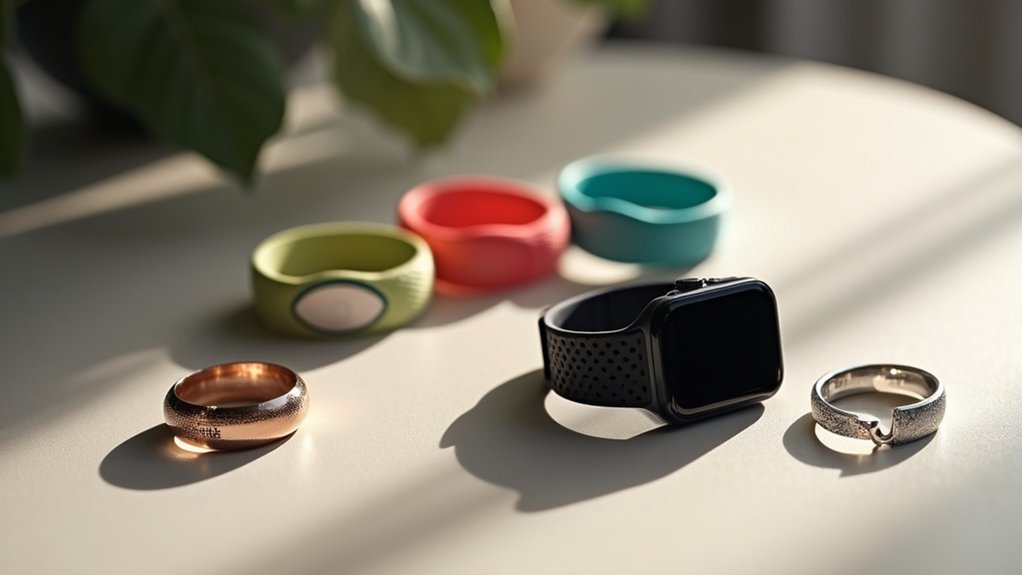
Specialized pulse oximeter rings and wristbands represent the cutting edge of wearable heart monitoring technology. These devices offer continuous tracking of both your heart rate and blood oxygen levels with impressive accuracy comparable to clinical-grade equipment. The subscription-free options like Amazfit Helio Ring and Ultrahuman Ring Air provide excellent value for health-conscious consumers.
| Device Type | Battery Life | Key Features | Accuracy |
|---|---|---|---|
| Oura Ring 4 | 12-16 hours | Sleep, activity metrics, recovery insights | ±2 bpm |
| Samsung Ring | 14+ hours | Discreet monitoring, smartphone integration | ±2% |
| Wellue O2Ring | 14 hours | Overnight SpO2, automatic recording | RMSE <4% |
| Wristbands | 24+ hours | Water-resistant, customizable alerts | ±2 bpm |
Most devices support measurement ranges from 70-99% oxygen saturation and 30-250 bpm pulse rates. Advanced models incorporate motion sensors to improve accuracy and Bluetooth connectivity for real-time data visualization on your smartphone.
Comparing Accuracy: Medical-Grade vs. Consumer Wearables
When shopping for a pulse oximeter wearable, you’ll notice significant accuracy differences between medical-grade devices (±3% accuracy) and consumer options that often fall short of ISO 80601-2-61:2017 standards.
Medical-grade devices undergo rigorous FDA clearance processes and must meet international certification requirements that consumer wearables typically don’t satisfy.
Biostealth’s design approach focuses on balancing accuracy and ease-of-use for an optimal consumer experience without compromising performance standards.
Your choice matters particularly for clinical applications like oxygen therapy adjustments, while consumer wearables remain adequate for general health monitoring and routine oxygen saturation checks.
Precision Disparities Exist
Medical-grade pulse oximeters markedly outperform their consumer wearable counterparts when it comes to accuracy and reliability. The clinical devices maintain a root mean square error of no greater than 3%, while consumer options often show wider variance—particularly vital when you’re monitoring oxygen levels where normal readings should be 95% or above.
When choosing between medical and consumer devices, consider:
- Measurement Technology – Transmittance sensors (used in finger-clip medical devices) provide more accurate readings than reflectance technology found in smartwatches.
- Clinical Relevance – Readings below 88% may require oxygen therapy, making precision essential.
- Environmental Factors – Consumer devices are more susceptible to inaccuracies from cold temperatures and motion artifacts.
For fitness tracking, consumer devices suffice, but for managing chronic conditions, medical-grade precision becomes indispensable.
Certification Standards Matter
Regulatory certifications represent the dividing line between devices you can trust with your health and those best suited for casual fitness tracking.
Medical-grade oximeters must meet ISO 80601-2-61:2017 standards and earn FDA clearance through rigorous testing on diverse subjects, including those with darker skin pigmentation.
When you’re comparing options, look for devices that have undergone clinical validation with at least 200 paired data points and ±2-3% SpO2 accuracy ratings.
Consumer wearables typically lack these certifications, instead carrying CE marks or self-declared compliance with basic safety standards.
This distinction matters profoundly in practice. Medical-grade devices meet performance requirements even in extreme environmental conditions like ambulances and air transport.
Medical-certified devices are appropriate for clinical decision-making and monitoring health conditions, while consumer wearables should be used primarily for fitness tracking and general wellness monitoring—not for diagnosing health issues.
Best Devices for Athletes and Fitness Enthusiasts
Athletes and fitness enthusiasts seeking peak performance monitoring can now access a range of sophisticated pulse oximeter wearables that track both oxygen saturation and heart metrics.
The market leaders combine accuracy with durability for intense training environments. Sudden drops in blood oxygen levels may signal serious medical conditions that could affect athletic performance.
For ideal training results, consider these top performers:
- Polar Vantage V3 – Offers extensive SpO2, ECG, and temperature monitoring with 150+ sport profiles and dual-band GPS for precision tracking
- Casio G-Shock Move DW-H5600 – Delivers rugged durability with water resistance and extended battery life for extreme conditions
- Fitbit Sense 2 – Provides holistic wellness tracking combining SpO2, ECG, and stress monitoring with an intuitive interface
These devices enable real-time oxygen saturation monitoring during workouts, helping you adjust training intensity and track recovery metrics for performance enhancement.
Wearables for 24/7 Heart Health Monitoring and Sleep Analysis
Your wearable’s overnight SpO2 readings can reveal concerning patterns like frequent drops below 90%, potentially indicating sleep apnea.
Watch for warning signs such as consistent low oxygen dips, irregular heart rates during sleep, and morning headaches when reviewing your device’s sleep data.
Modern pulse oximeter wearables from Garmin, Fitbit, and Samsung now automatically flag these concerning patterns, giving you valuable insights to discuss with your healthcare provider. For optimal heart monitoring performance, ensure your device has a proper fit as accuracy can vary significantly if the smartwatch or band is not worn correctly.
Night SpO2 Monitoring Trends
While sleep occupies nearly a third of our lives, advanced pulse oximeter wearables now transform this time into a valuable health monitoring opportunity. Devices like the Withings ScanWatch 2 and Fitbit Sense 2 offer continuous blood oxygen tracking during sleep, detecting potential breathing disturbances and sleep apnea symptoms. This verification process ensures accuracy before presenting health data to users.
These wearables provide extensive insights through:
- 24/7 SpO2 and ECG monitoring – tracking your oxygen levels and heart rhythm throughout the night
- Automatic sleep pattern recognition – analyzing your sleep stages and quality without manual input
- Real-time health alerts – notifying you of concerning changes in heart activity or oxygen levels
With FDA-cleared technology and battery life extending up to 30 days, these stylish hybrid smartwatches deliver both functionality and convenience for long-term health monitoring.
Sleep Apnea Warning Signs
How effectively can modern wearables detect the silent threat of sleep apnea?
Today’s pulse oximeter wearables track critical indicators like frequent oxygen desaturations, irregular heart rhythms, and disrupted sleep patterns—all potential signs of this dangerous condition.
Your device monitors the Oxygen Desaturation Index (ODI), capturing those telltale drops below 90% that occur during breathing pauses.
When combined with Heart Rate Variability analysis, these devices identify the autonomic imbalance characteristic of apnea episodes. These wearables are especially valuable for detecting sudden drops in blood oxygen levels that occur repeatedly during sleep apnea episodes.
You’ll also receive data on your sleep efficiency and movement patterns, which typically show increased restlessness during apnea events.
Unlike one-night sleep studies, your wearable provides continuous 24/7 monitoring, potentially detecting early warning signs before cardiovascular complications develop—giving you time to seek medical evaluation and begin appropriate interventions.
Latest Innovations in Pulse Oximeter Wearable Technology
As the healthcare industry continues to embrace wearable technology, pulse oximeter devices have undergone remarkable transformations in recent years.
Modern wearables now integrate AI algorithms that analyze your oxygen and heart rate data to predict health concerns before they become serious issues. Users can expect to view messages like system readiness while waiting for their health data to be processed.
The latest innovations you’ll find include:
- Near Infrared Spectroscopy (NIRS) technology that broadens monitoring beyond traditional pulse oximetry while maintaining comfort for long-term wear.
- AI-driven analytics that compensate for motion artifacts, improving accuracy while providing personalized insights based on your unique baselines.
- Multi-night longitudinal monitoring capabilities that deliver valuable clinical insights through simplified, fewer-channel designs that challenge traditional diagnostic approaches.
These advancements enable continuous health tracking for chronic conditions while seamlessly integrating with remote health platforms for your healthcare provider.
Frequently Asked Questions
Can Wearable Pulse Oximeters Replace Clinical Oxygen Monitoring Devices?
No, wearable pulse oximeters can’t fully replace clinical devices yet. They offer continuous monitoring but lack the accuracy, regulatory approval, and clinical validation needed for medical settings. You’ll still need clinical devices for reliable healthcare use.
How Do Extreme Temperatures Affect Pulse Oximeter Accuracy?
Extreme temperatures greatly affect your pulse oximeter’s accuracy. Cold causes vasoconstriction, reducing blood flow and signal quality. Heat can cause vasodilation and sweat interference. You’ll get more reliable readings at normal body temperatures.
Are There Waterproof Pulse Oximeters for Swimming and Water Sports?
While few pulse oximeters are fully submersible, you’ll find limited options with IP64 ratings like the Viatom WearO2. For swimming, you’re better off with waterproof fitness trackers or dedicated heart rate monitors like Polar OH1+.
Can Pulse Oximeters Detect Sleep Apnea Without Medical Diagnosis?
Pulse oximeters can detect oxygen drops that may indicate sleep apnea, but they can’t provide an official diagnosis. You’ll still need professional medical evaluation to confirm sleep apnea and determine appropriate treatment options.
Do Insurance Companies Cover Pulse Oximeter Wearables for Chronic Conditions?
Insurance coverage for pulse oximeter wearables varies by provider. You’ll likely need pre-approval based on medical necessity. Some plans cover devices for severe chronic conditions, but you should verify your specific insurance policy’s requirements first.
In Summary
You’ve now got a clear picture of today’s top pulse oximeter wearables. Whether you’re prioritizing medical-grade accuracy, athletic performance, or sleep tracking, there’s a device that fits your needs and budget. Remember to take into account battery life, comfort, and data integration when making your choice. As technology advances, these wearables will continue to offer more precise, thorough insights into your heart health and oxygen levels.

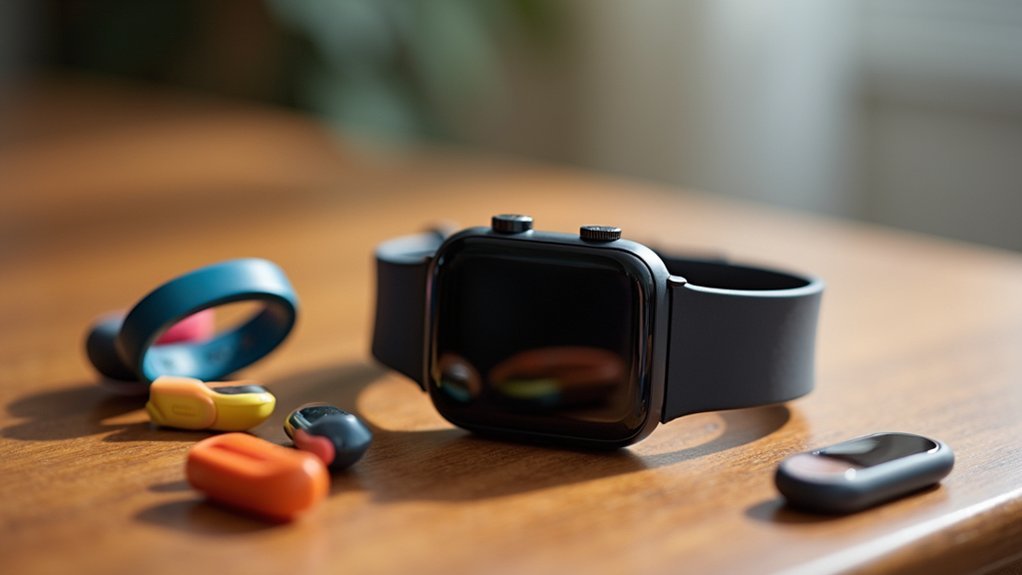
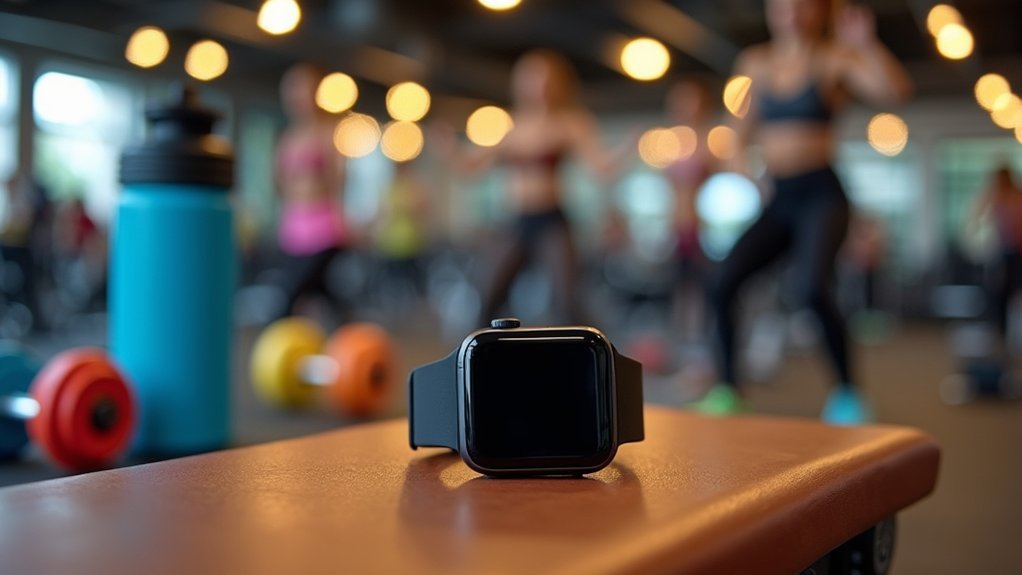
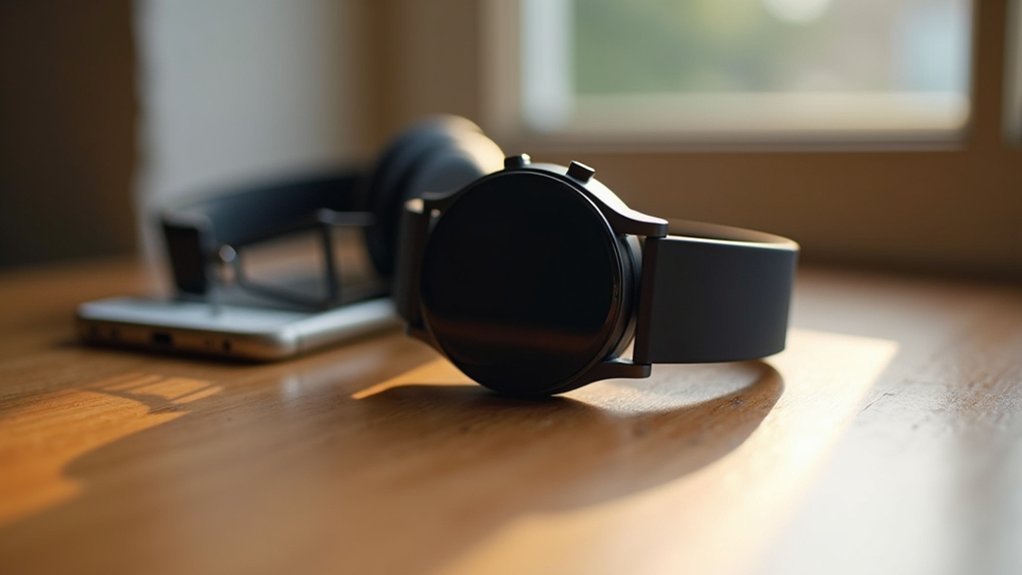
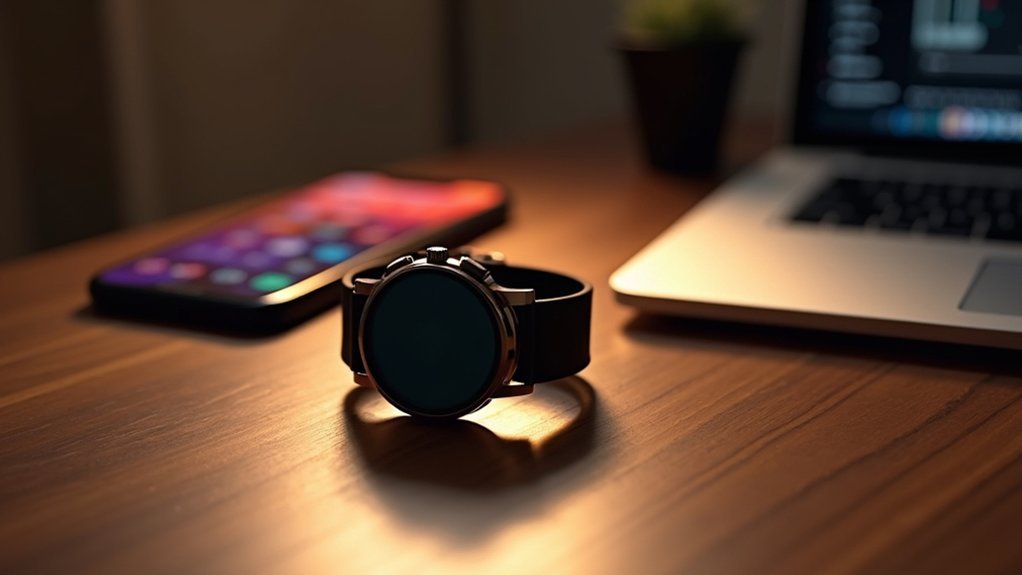
Leave a Reply